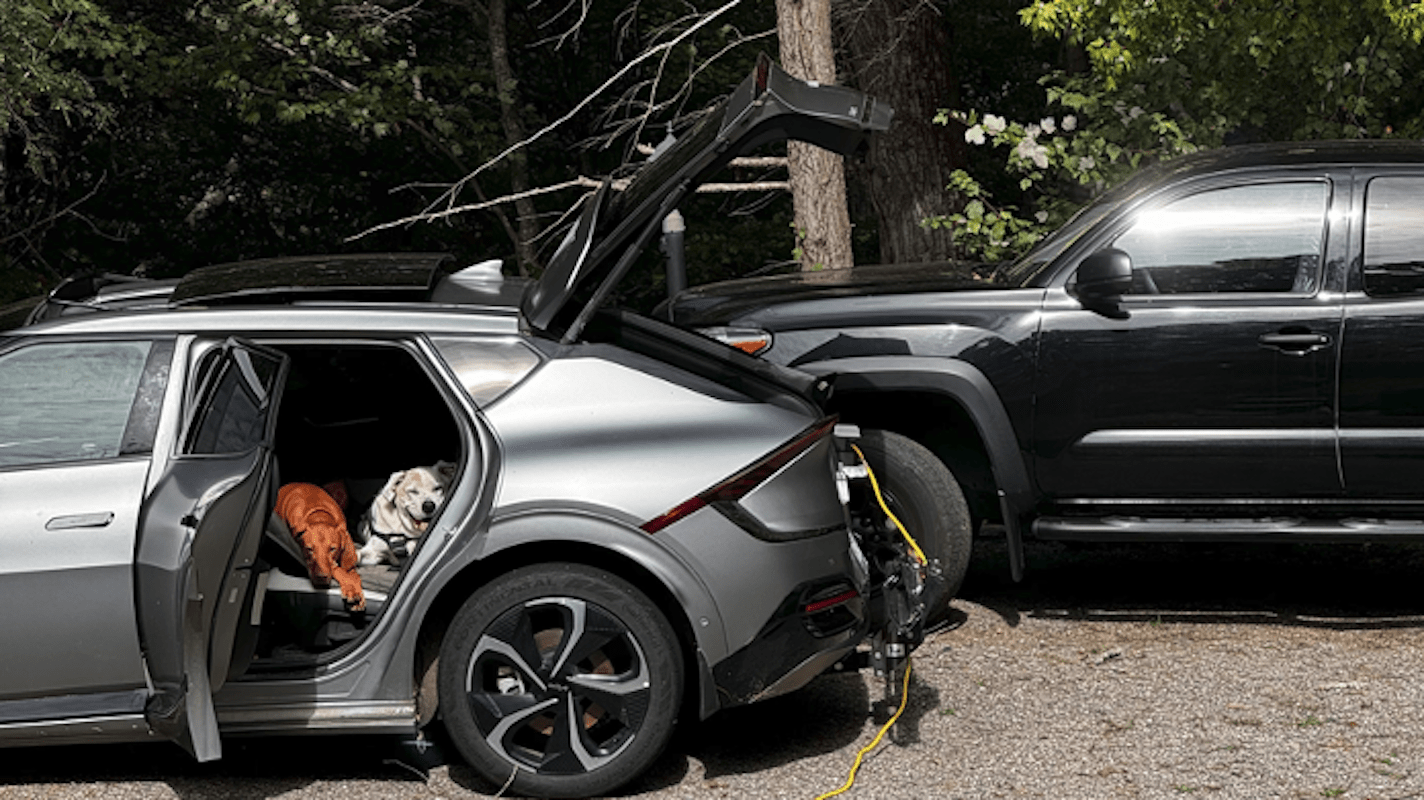Electric Vehicle Keeps Asheville Residents Charged During Hurricane Helene
Nov. 14, 2024

“As the owner of three electric motorcycles and three electric bicycles, I’m not exactly an e-mobility holdout,” Jason Smith told us.
Smith worked on the launch of an electric motorcycle company, and his current role is focused on battery and hybrid technologies. And yet, his everyday ride is a Ford Transit van with a gas engine. Smith said he’s long sat on the sidelines, waiting for the electric vehicle (EV) hat trick—price, tech, and infrastructure—to sync up before committing to buying an electric car.
Then on Friday, Sept. 27, 2024, Hurricane Helene tore through Asheville and the math changed.
Smith’s close friends live 45 feet above the Swannanoa River, close enough to flood-prone neighbors to be on edge but high enough to feel safe. Erring on the side of caution, they packed up their dogs and joined Smith’s family on Thursday night to ride out the storm at his place near downtown. A 3-kWh battery power station for the essentials, city water, a cache of nonperishables, and a gas stove met their needs during prior storms. Hurricane Helene was different.
Friday morning brought downed trees, a power blackout, and complete radio silence with the outside world. They set up the battery power bank to keep the fridge going and basement sump pump working, but by midafternoon, it was obvious they’d be out of power that night.
Smith’s friends bushwhacked through miles of downed trees and power lines to check their home. It had survived but had a massive oak tree through the roof. It was clear that they’d be riding out the aftermath together.
That evening, as the power bank was near tapping out, one of the friends reminded everyone of his Kia EV6’s bidirectional vehicle-to-load (V2L) charging capability. V2L charging allows for EVs to become a power source by giving their electricity to other end uses—in Smith’s case, his power bank for appliances. Within minutes, the group was running an extension cord from the car to power the fridge, lights, and electronics.
“The EV6’s 3.6-kW output was enough to keep the essentials going,” said Smith. “It was a lifeline during those dark, anxious hours.”
Without power at home for two weeks, the local Sam’s Club fast chargers became the go-to for EV top-ups. Smith said that the 20-minute charge time wasn’t just practical; it was therapy, a chance to swap storm survival stories with strangers who became instant friends. By the time the access road was finally passable, and they returned to a home with no power, Helene’s one-month anniversary had just passed, and their house was still being powered by their EV.
“Helene’s aftermath was a wake-up call and changed our views on preparedness,” said Smith. “I’ve known that an electric car was in my future. Looks like the future is here.”
Through funding opportunities and technical assistance, the Joint Office is working diligently to build out the national EV charging network and deliver fast and reliable mobility options in communities across the country. Accessible public chargers are essential not just to everyday life, but also in times of emergency.

